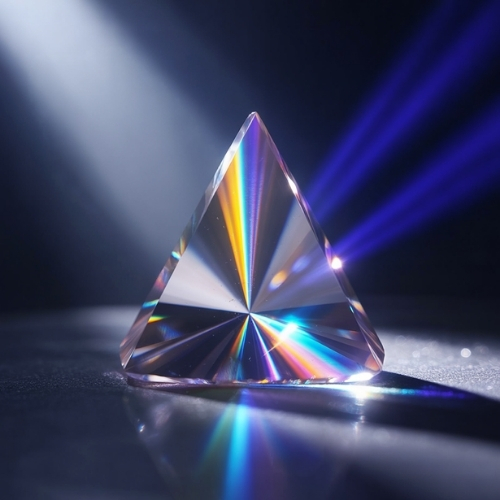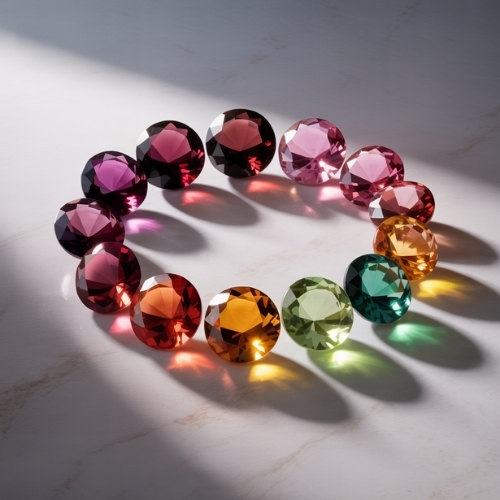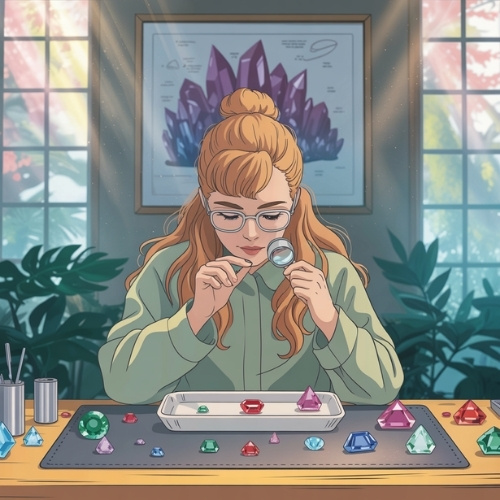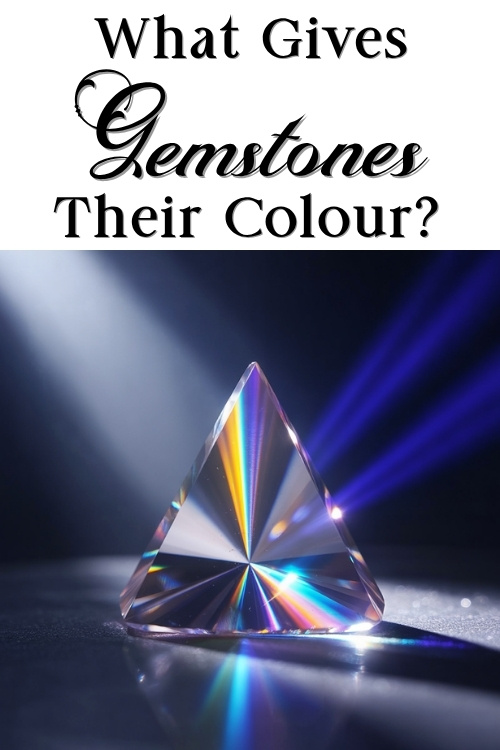Have you ever wondered why gemstones have such beautiful, vibrant colours? The secret lies in what’s happening deep inside their crystal structures. Tiny elements, natural imperfections, and the way light interacts with the stone all play a part.
Whether it’s the deep green of an emerald, the fiery red of a ruby, or the colour-changing magic of alexandrite, each gem owes its beauty to a blend of science and nature.
The Science Behind Most Gemstone Colour: Selective Absorption
Remember shining white light through a prism in science and discovering all the colours of the rainbow? It’s that same rainbow hidden in white light, and the fascinating way many gemstones interact with it, that gives so many of them their beautiful colour.
When light hits a gemstone, not all the colours (wavelengths) within that light pass through it. Some wavelengths are absorbed by the stone, while others bounce back to our eyes.
This process is called selective absorption and it’s the most common reason for gemstones to appear coloured. The colours we don’t see are the ones absorbed by the gem. The colours we do see are the ones reflected back to us.
A blue sapphire, for example, is trapping most of the red and yellow wavelengths and letting the blue ones escape. As it’s mostly blue light bouncing back out of the gemstone, our eyes see the gemstone as blue. Without the trace elements iron and titanium, this trick of the light wouldn’t happen. We’d see a nearly colourless gemstone instead.
Colour-Change Gemstones
Some gemstones appear to change colour depending on the light around them. This effect is most famously seen in alexandrite, which looks green in daylight but red under incandescent light.
Artificial incandescent lighting is the kind of light produced by heat, such as a candle or an old-style light bulb. It has more red wavelengths, which is why alexandrite appears reddish in these conditions.
Daylight (and most LED lights), on the other hand, has a higher amount of blue light, so the gem appears green under these sources.
This fascinating effect happens because alexandrite absorbs and reflects different parts of the spectrum depending on the light source.
Trace Elements and Gemstone Colour
Many gemstones get their colour from trace elements, which are tiny amounts of other metals within their crystal structure. When these elements are responsible for a gem’s colour, they’re called chromophores.
For example:
- Iron and titanium create the blues in sapphire.
- Chromium is an interesting one. It gives rubies their red colour, but it’s also the reason many emeralds are green.
- Copper gives turquoise and paraíba tourmaline their vivid blue-green shades.
Trace elements like this are incredibly potent. Even a few parts per million can completely transform a gemstone’s colour.
Other Natural Causes of Colour
Colour in gemstones doesn’t always come from trace elements. Sometimes, structure alone is responsible.
Here are a few other fascinating causes:
- Inherent Pigmentation: Some gemstones are coloured because of the material itself. Lapis lazuli, for example, is naturally blue due to the mineral lazurite, no light tricks required. This is why it was historically ground into pigment for paint.
- Interference and Diffraction: Some gems show colour because of the way light reflects within layers or patterns inside the stone. Opal and labradorite are great examples of this.
- Inclusions: Sometimes, inclusions, the small minerals or materials trapped inside a gem, add colour or sparkle. Think of aventurine quartz, which glitters because of tiny mica inclusions.
Nature has more than one way of painting a gemstone!
Treatments and Dyeing
Not every gemstone shows its best colour straight from the ground. Some stones are treated to enhance their natural hues.
One common method is dyeing. The dye seeps into tiny pores in the stone, making the colour richer or more uniform. This treatment is often used for gems like jade, turquoise, and agate.
Dyeing isn’t necessarily a bad thing, but it’s important for buyers to know about it. Dyed stones can fade over time or need gentler care than untreated ones.
A Colourful Conclusion
Gemstones get their incredible colours in many ways. Some, like sapphire and ruby, owe their hues to trace elements and the way they interact with light. Others, like aventurine or opal, get their colours from tiny structural quirks or light effects. And others, like lapis lazuli, are physically coloured, giving them a vibrant hue naturally.
The next time you admire a gemstone, take a moment to think about all the science, nature, and magic behind its colour. Each one is a tiny masterpiece of the Earth. A dazzling combination of chemistry, physics, and natural artistry.
🔗Discover more gemmology related topics in my blogs Jewellers Corner
📌 Don’t forget to save this guide to how gemstones get thier colours so you can find it again.




